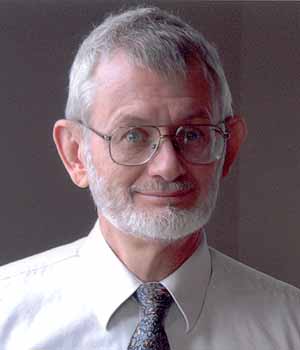Question Set III. Endocrine Glands
Point to an answer. Green color and
bold indicates "CORRECT." Red
color and italics indicates "Wrong answer."
(NOTE: In cases where all of the responses are correct,
only "all of the above" will be indicated as correct.)
X. Sample question.
a. wrong
answer.
b. wrong
answer.
c. CORRECT
answer.
d. wrong
answer.
e. wrong
answer.
88. Cells specialized to secrete steroids typically contain:
a. extensive
smooth endoplasmic reticulum.
b. numerous
mitochondria with tubular cristae.
c. many
lipid droplets.
d. well-developed
Golgi apparatus.
e. all
of the above.
89. Cells specialized to secrete peptides or proteins typically
contain:
a. extensive
smooth endoplasmic reticulum.
b. numerous
mitochondria with tubular cristae.
c. many
lipid droplets.
d. extensive
rough endoplasmic reticulum.
e. all
of the above.
90. The portion of the pituitary which contains cords and
clusters of secretory epithelial cells is the:
a. anterior
lobe.
b. posterior
lobe.
c. neurohypophysis.
d. median
eminence.
e. infundibulum.
91. The portion of the pituitary which contains terminals
of axons arising from neuron cell bodies in the hypothalamus is the:
a. anterior
lobe.
b. posterior
lobe.
c. adenohypophysis.
d. median
eminence.
e. infundibulum.
92. Adenohypophysis (adeno = glandular) is another name
for the:
a. anterior
lobe of the pituitary.
b. posterior
lobe of the pituitary.
c. hypothalamus.
d. median
eminence.
e. infundibulum.
93. Neurohypophysis is another name for the:
a. anterior
lobe of the pituitary.
b. posterior
lobe of the pituitary.
c. hypothalamus.
d. median
eminence.
e. infundibulum.
94. The base of the hypothalamus which connects with the
pituitary is called the:
a. anterior
lobe.
b. posterior
lobe.
c. neurohypophysis.
d. adenohypophysis.
e. median
eminence and infundibulum.
95. (Review; see Kandel, Schwartz & Jessel, 4th ed., p 976)
Along the midline within the hypothalamus is the:
a. optic
chiasm.
b. amygdala.
c. third
ventricle.
d. lateral
hypothalamic area.
e. mammillary
body.
96. (Review; see Kandel, Schwartz & Jessel, 4th ed., p 976)
Immediately anterior to the hypothalamus is the:
a. optic
chiasm.
b. amygdala.
c. third
ventricle.
d. lateral
hypothalamic area.
e. mammillary
body.
97. (Review; see Kandel, Schwartz & Jessel, 4th ed., p 976)
The posterior region of the hypothalamus is the:
a. optic
chiasm.
b. amygdala.
c. third
ventricle.
d. lateral
hypothalamic area.
e. mammillary
body.
98. Hypophyseal portal vessels bring blood to the adenohypophysis
from the:
a. liver.
b. intestine.
c. amygdala.
d. neurohypophysis.
e. median
eminence of the hypothalamus.
99. Pituicytes of the posterior pituitary are most like:
a. fibroblasts.
b. glial
cells.
c. secretory
epithelial cells.
d. squamous
epithelial cells.
e. melanocytes.
100. The anterior pituitary contains secretory cells called:
a. somatotrophs.
b. lactotrophs.
c. thyrotrophs.
d. corticotrophs.
e. all
of the above, and also gonadotrophs.
101. Follicle stimulating hormone (FSH) and luteinizing
hormone (LH) are secreted by the:
a. somatotrophs.
b. lactotrophs.
c. thyrotrophs.
d. posterior
pituitary.
e. gonadotrophs.
102. Thyroid stimulating hormone (thyrotropin, TSH) is secreted
by the:
a. somatotrophs.
b. posterior
pituitary.
c. thyrotrophs.
d. corticotrophs.
e. pineal.
103. Adrenocorticotrophic hormone (ACTH) is secreted by
the:
a. somatotrophs.
b. lactotrophs.
c. posterior
pituitary.
d. corticotrophs.
e. pineal.
104. Growth hormone (somatotropin, GH) is secreted by the:
a. somatotrophs.
b. pineal.
c. thyrotrophs.
d. corticotrophs.
e. posterior
pituitary.
105. Prolactin is secreted by the:
a. somatotrophs.
b. lactotrophs.
c. thyrotrophs.
d. posterior
pituitary.
e. gonadotrophs.
106. Oxytocin is secreted by the:
a. somatotrophs.
b. lactotrophs.
c. posterior
pituitary.
d. pineal.
e. gonadotrophs.
107. Antidiuretic hormone (vasopressin, ADH) is secreted
by the:
a. pineal.
b. posterior
pituitary.
c. thyrotrophs.
d. corticotrophs.
e. gonadotrophs.
108. Melatonin is secreted by the:
a. somatotrophs.
b. posterior
pituitary.
c. pineal.
d. corticotrophs.
e. gonadotrophs.
109. Corticotrophs, gonadotrophs, lactotrophs, somatotrophs,
and thyrotrophs are all found in the:
a. neurohypophysis.
b. adenohypophysis.
c. hypothalamus.
d. pineal.
e. adrenal.
110. Cells of the adenohypophysis, when named according
to their staining properties rather than their hormones, are the:
a. acidophils.
b. basophils.
c. chromophobes.
d. all
of the above.
111. The pineal gland is:
a. derived
evolutionarily from a medial photoreceptor organ.
b. located
at the posterior end of the third ventricle.
c. innervated
by sympathetic axons from the superior cervical ganglion.
d. composed
of glial cells and cells (pinealocytes) similar to neurons.
e. all
of the above.
112. Which gland has a distinct cortex and medulla?
a. thyroid
b. parathyroid
c. adrenal
d. pituitary
e. testes
113. Which tissue is most similar to a sympathetic ganglion?
a. testicular
interstitium
b. pancreatic
islets
c. adrenal
cortex
d. adrenal
medulla
e. ovarian
medulla
114. Which gland is organized into follicles lined by simple
cuboidal epithelial cells and containing stored hormone precursor?
a. thyroid
b. parathyroid
c. adrenal
d. pancreatic
islets
e. testes
115. Which tissue is embedded within a serous acinar exocrine
gland?
a. testicular
interstitium
b. pancreatic
islets
c. adrenal
cortex
d. adrenal
medulla
e. ovarian
medulla
116. Epithelial cells are arranged into cords around large
capillaries or sinusoids in all of the following EXCEPT the:
a. parathyroid.
b. adenohypophysis.
c. adrenal
cortex.
d. adrenal
medulla.
e. pancreatic
islets.
117. A zone of parallel cords or fascicles (zona fasciculata)
is found in the:
a. parathyroid.
b. adenohypophysis.
c. adrenal
cortex.
d. adrenal
medulla.
e. pancreatic
islets.
118. Pancreatic alpha cells secrete:
a. insulin.
b. glucagon.
c. somatostatin.
d. pancreatic
polypeptide.
e. aldosterone.
119. Pancreatic beta cells secrete:
a. insulin.
b. glucagon.
c. somatostatin.
d. pancreatic
polypeptide.
e. aldosterone.
120. Pancreatic delta cells secrete
a. insulin.
b. glucagon.
c. somatostatin.
d. pancreatic
polypeptide.
e. aldosterone.
121. Pancreatic PP cells secrete:
a. insulin.
b. glucagon.
c. somatostatin.
d. pancreatic
polypeptide.
e. aldosterone.
122. Which organ secretes steroid hormones?
a. islets
of Langerhans
b. adrenal
cortex
c. adrenal
medulla
d. thyroid
e. parathyroid
123. Which tissue does NOT secrete steroid hormones?
a. testicular
interstitium
b. adrenal
cortex
c. parathyroid
d. ovarian
follicles
e. corpus
luteum
124. Calcitonin is secreted by:
a. parathyroid
chief cells.
b. thyroid
follicular cells.
c. thyroid
parafollicular cells.
d. cells
of adrenal cortex.
e. cells
of adrenal medulla.
125. Epinephrine and norepinephrine are secreted by:
a. parathyroid
chief cells.
b. thyroid
follicular cells.
c. thyroid
parafollicular cells.
d. cells
of adrenal cortex.
e. cells
of adrenal medulla.
126. Aldosterone is secreted by cells of the:
a. testicular
interstitium.
b. adrenal
cortex.
c. parathyroid.
d. ovarian
follicles.
e. corpus
luteum.
127. Estrogen and progesterone are secreted by cells of
the:
a. adrenal
medulla.
b. adrenal
cortex.
c. parathyroid.
d. ovary.
e. adenohypophysis.
128. The activity of osteoclasts is stimulated, increasing
blood calcium levels, by secretion from the:
a. thyroid
follicles.
b. adrenal
cortex.
c. parathyroid.
d. thyroid
parafollicular cells (C cells).
e. neurohypophysis.
129. The activity of osteoclasts is inhibited, decreasing
blood calcium levels, by secretion from the:
a. thyroid
follicles.
b. adrenal
cortex.
c. parathyroid.
d. thyroid
parafollicular cells (C cells).
e. neurohypophysis.
130. The permeability of renal collecting duct cells is
increased by secretion from the:
a. thyroid
follicles.
b. adrenal
cortex.
c. parathyroid.
d. thyroid
parafollicular cells (C cells).
e. neurohypophysis.
131. Reabsorption of sodium by renal tubules is regulated
by secretion from the:
a. thyroid
follicles.
b. adrenal
cortex.
c. parathyroid.
d. thyroid
parafollicular cells (C cells).
e. neurohypophysis.
132. Going from the capsule toward the medulla, the zones
of the adrenal cortex are:
a. zona
glomerulosa, zona fasciculata, zona reticularis.
b. zona
glomerulosa, zona reticularis, zona fasciculata.
c. zona
fasciculata, zona glomerulosa, zona reticularis.
d. zona
reticularis, zona fasciculata, zona glomerulosa.
e. zona
reticularis, zona glomerulosa, zona fasciculata.
133. Smooth muscle cells
of the uterus and myoepithelial cells of the mammary gland contract
in response to secretion from the:
a. adrenal
cortex.
b. corpus
luteum.
c. neurohypophysis.
d. parathyroid.
e. thyroid.
134. Endocrine secretions by hepatocytes include:
a. serum
albumins.
b. angiotensinogen.
c. fibrinogen.
d. glucose
from glycogen breakdown.
e. all
of the above.
135. The target cells stimulated by angiotensin (after its
formation from angiotensinogen is catalyzed by renin from renal juxtaglomerular
cells) are found in the:
a. ovary.
b. testes.
c. adrenal
cortex.
d. parathyroid.
e. adenohypophysis.
 Comments
and questions: dgking@siu.edu
Comments
and questions: dgking@siu.edu

 Comments
and questions: dgking@siu.edu
Comments
and questions: dgking@siu.edu